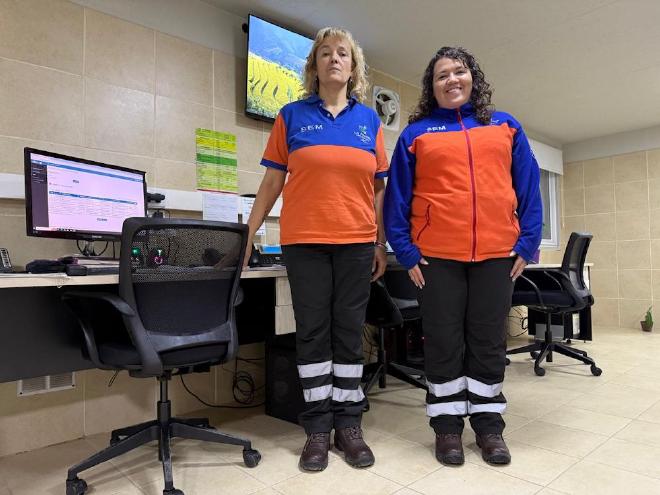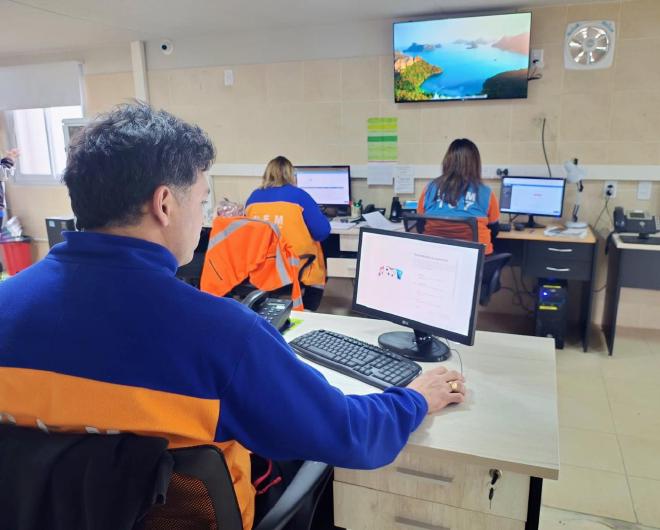

The new space is part of the process of reorganization and restructuring of the health services of the Lucio Molas hospital, where the place where the adult guard operated was completely reconditioned.
The La Pampa’s Undersecretary of Health, Gustavo Vera, explained to the Provincial News Agency that it is a “strategic decision that allows consolidating the operation of the SEM in its own building, specifically designed to meet the needs of its staff and guarantee an agile and efficient service. The new physical space not only improves working conditions for the team of radio operators, but also strengthens the capacity to respond to emergencies throughout the urban territory.”
The movement responded to comprehensive planning aimed at expanding coverage, optimizing logistics and guaranteeing greater accessibility to the main road corridors of the city. With this advance, the system is positioned closer to the community, taking a key step in the modernization of the Public Health system.
Vera explained that, in this first instance, the transfer of the emergency regulation area, the management center, monitoring and the communication structure that supports the operation of Line 107 was completed.
“The entire team of operators who regulate the demands of urgencies and emergencies and coordinate the medical response is already working on this new space, which provides better conditions both in terms of buildings and connectivity. In the coming days we will complete the process by moving the operational team: ambulances, logistics vehicles, drivers, medical and nursing personnel, in addition to the radio communications center,” Vera said.
Own space #
Meanwhile, Juan Barbero, from CODES, stressed that the event “represents much more than a change of place. For the first time, the SEM will have its own building within the Lucio Molas health complex, a historic space for provincial public health, which until a few years ago housed the central guard (adult guard). We are recovering and reusing a State facility, reducing expenses and honoring an outstanding debt with the pre-hospital team in the capital city, which for years operated in rented spaces or that are not appropriate for the complexity that the sector has been acquiring.”
Barbero explained how the CODES System works and the importance of the strategic location of the bases: “The operating model of the SEM is structured in two fundamental pillars: on the one hand, the Emergency Regulation Sector, where calls are received, the attention to each particular demand is categorized, prioritized and coordinated, and on the other, the Operational Sector, in charge of providing direct response through mobile phones, professionals and equipment. This articulation is key for each urgent and emergency situation to be resolved efficiently.”
Once the transfer of the base that is currently located on Avenida Spinetto is completed, “the SEM will have two operational bases located at strategic points in Santa Rosa: one in the Health Center and another on the grounds of the Molas Hospital itself. This territorial distribution guarantees efficient coverage for the entire city, with agile access to the main road corridors, such as National Route 5, National Route 35, the Beltway, and direct proximity to the René Favaloro Hospital, the usual emergency care center. All this translates into a notable improvement in the availability and accessibility of mobile phones in emergency situations and high demand”.
“This advance represents a true milestone for the Emergency Medical System. Not only because of the symbolic value of settling in an emblematic space of provincial public health, but also because of the qualitative leap in operational, logistical and human matters. In the medium and long term, it is expected to continue strengthening this decentralization policy through the incorporation of new bases, which will allow us to be closer to the community and respond more quickly and effectively,” concluded Barbero.
A specially designed place #

Mariana Díaz, coordinator of the radio operators sector, for her part, pointed out that, for the first time, “the SEM team has its own, large and functional space. Having a place designed specifically for our work makes a real difference, not only operationally, but also humanly. Comfort and dignity in the work environment add a lot, and even more so when that place is designed to strengthen the service we provide every day.The on-call shift is carried out in teams of operators to better coordinate the aid. With this new base, we will have the possibility of expanding up to four workstations installed in the same space, which significantly improves our responsiveness. In addition to greater convenience, we have more advanced technology: for example, the possibility of monitoring the location of mobile phones in real time through GPS. This will allow us to better organize the proximity of vehicles, save time in critical situations and facilitate the work of the response team. This transfer hierarchizes our SEM. Not only because of the quality of the equipment, but also because of the conditions it offers to the workers”, Díaz concluded
Contact [Notaspampeanas](mailto: notaspampeanas@gmail.com)

